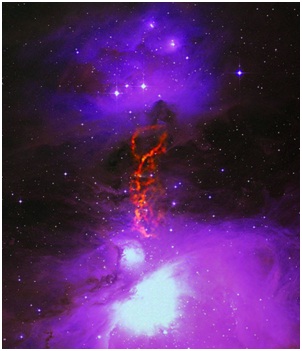The large-size dust particles (millimeter- to centimeter-sized) were considered as the start point of the planet formation. The growth of the dust particles were thought to be a slow process, and only when the interstellar material collapses under its own weight for millions of years – gravity overwhelming pressure – can densities reach much higher levels. Stellar atmospheres, ices, and rocks, all condense out of matter’s gas phase in the great swirls of proto-stellar, or proto-planetary disks at the endpoint of this collapse. In addition, around a star or a brown dwarf, it’s expected that drag forces cause large particles to lose kinetic energy and spiral in toward the star. This process should be relatively fast, but since planets are fairly common, many astronomers have put forth theories to explain how dust hangs around long enough to form planets. One such theory is the so-called dust trap: a mechanism that herds together large grains, keeping them from spiraling inward.
In a new studyled by Dr. Scott Schneein the National Radio Astronomical Observatory (NRAO) focused northern portion of the Orion Molecular Cloud Complex, a star-forming region that spans hundreds of light-years with ongoing stellar birth, the researchers performed a combined analysis of the dust emissions with the recently published high-resolution temperature map over the Orion Nebular by Dr. Di Li, the chief scientist in the research group of “ISM evolution and star formation” in NAOC. The research work shows that the dust emissivity in themillimeter wavelengths isunexpectedly bright. The best (but not only) explanation is that instead of the usual microscopic dust particles mixed in with molecular gas, there are ‘pebbles’ as large as a centimeter across littering this interstellar region. These larger objects are more efficient at radiating away their thermal energy thus would emit bright millimeter radio waves.With the presence centimeter-size pebbles, the progress of the planet formation would bemuch faster and more efficient than in the case with only small-size dust.
The observational data of the current result is obtained with the Green Bank Telescope (GBT), and the result has been reported by a few leading science medias over the world including “Science American” and “Universe Today”.

A radio (orange) and optical composite of the Orion Molecular Cloud Complex showing the OMC-2/3 star-forming filament. Credit: S. Schnee, et al. / B. Saxton, B. Kent (NRAO/AUI/NSF)













